Last updated: January 22, 2024
Article
Monitoring From Space: Using Satellite Imagery to Measure Landscape Conditions on the Ground
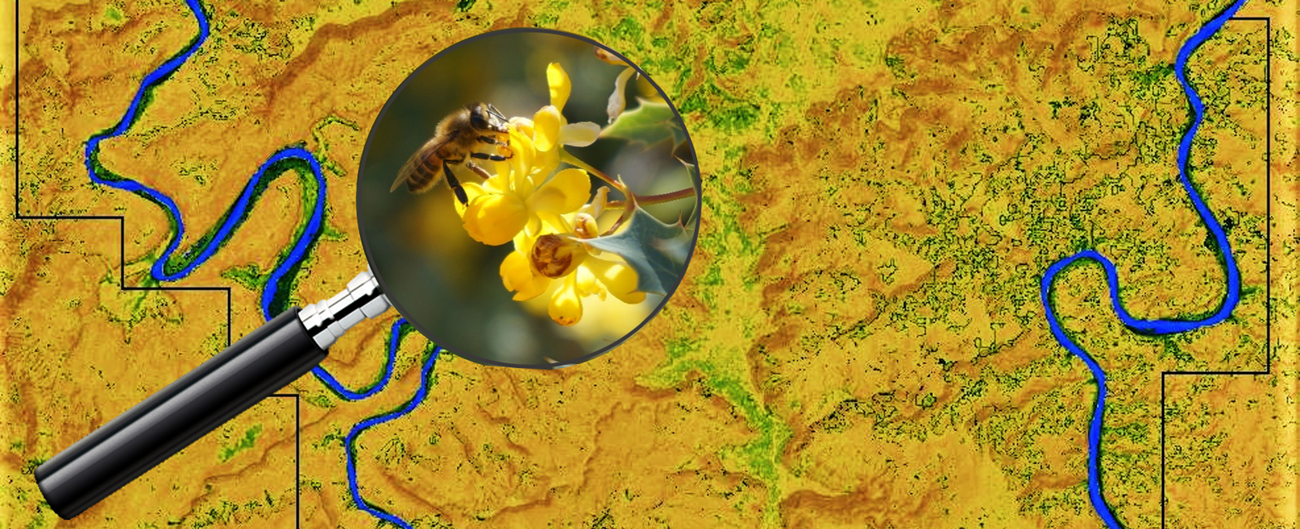
Flower photo by Luke Gommermann. Satellite image from NASA.
Introduction
Scientists from the National Park Service’s Northern Colorado Plateau Network (NCPN) travel thousands of miles each year to collect data on plants, soils, and water across network parks. But it would be impossible to cover every square inch of the Northern Colorado Plateau with boots on the ground. Instead, we simultaneously monitor the parks with boots in space—satellite data that provide information at a much broader scale.
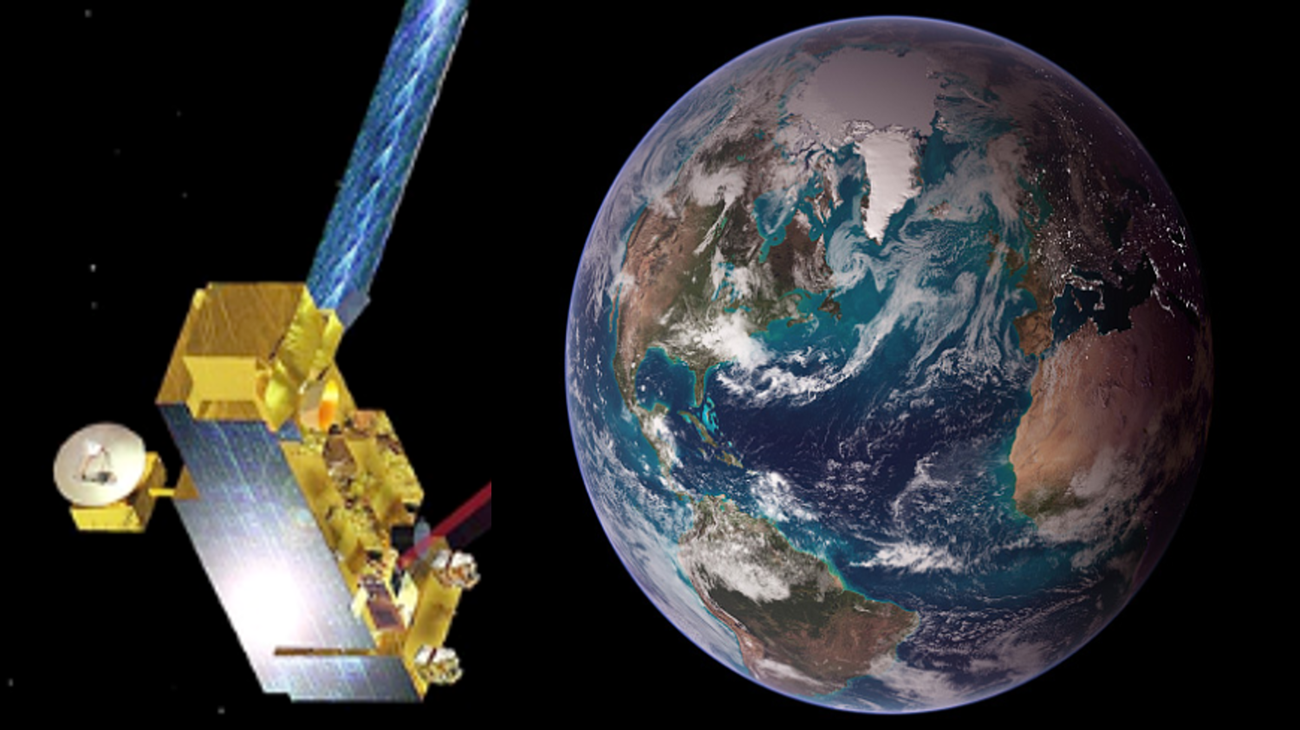
Say "Cheese!"
Lucky for scientists here on Earth, NASA has a fleet of satellites that have been taking our picture from space for decades. One of the most important satellite sensors for NCPN is called MODIS, which stands for Moderate-resolution Imaging Spectroradiometer. It’s essentially a fancy camera that orbits Earth at an altitude of 438 miles, taking images as our planet spins below. The images are derived from measurements of sunlight reflected from Earth’s surface, like photos from a camera. As a result, we have access to an incredible number of images, taken over a long period of time, and we’ve analyzed nearly 500 images taken over 20 years.
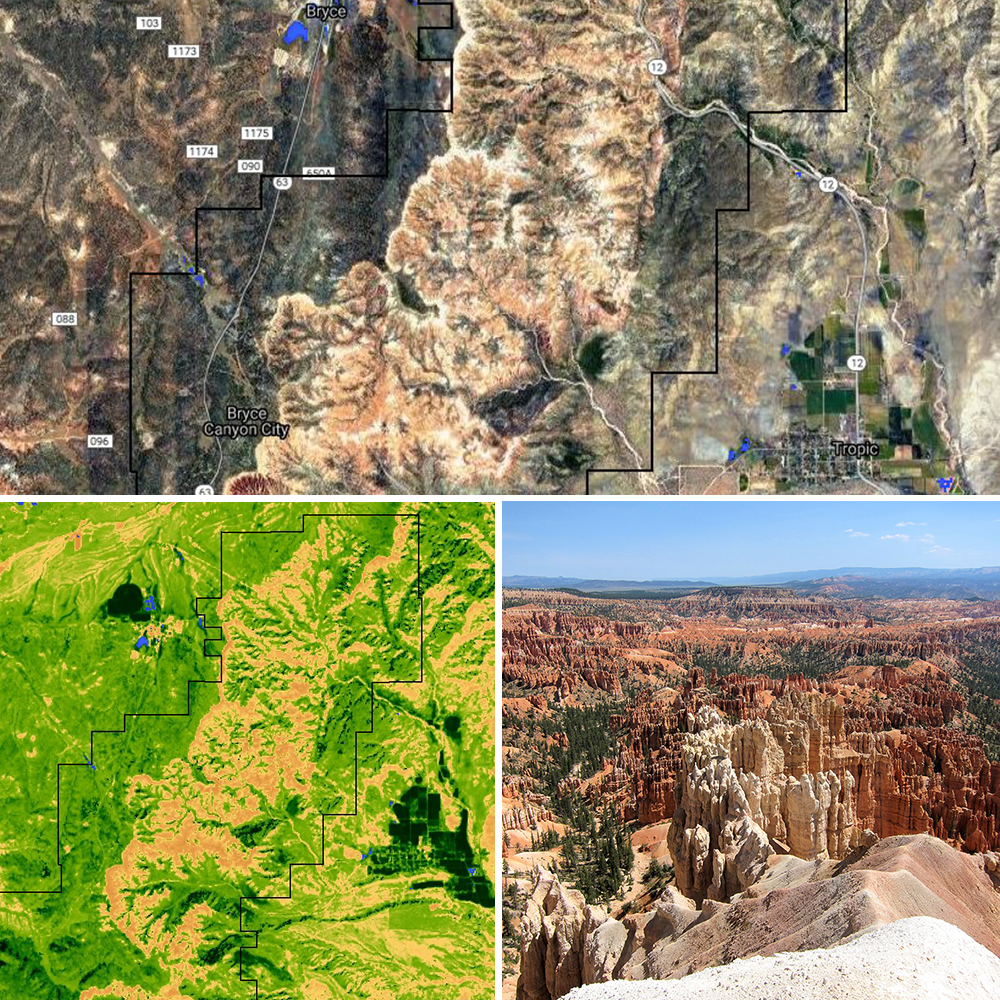
Pictures of Light
Satellite images are more than just beautiful pictures—they contain a wealth of useful data. NCPN scientists use them to determine the amount of live plant cover on the landscape and how it changes over time. Plants strongly reflect infrared wavelengths of light that are invisible to the human eye. The satellite images capture infrared and other wavelengths of reflected light with high accuracy, allowing us to measure the growth and death of plants across the landscape. To measure these levels of “greenness,” we combine reflectance from different wavelengths into an index called NDVI. The images at right show three different views of the Bryce Canyon Amphitheater; each provides different information. At the top is an aerial view showing landscape features. On the left is a satellite image highlighting plant cover in green and bare ground in orange made by calculating the NDVI index. The image on the right shows what NCPN scientists see as they monitor conditions on the ground. Monitoring on the ground and from space allows us to learn more about parks than we could using only one method.
The Leaf Engine
Just like the amount of gas in your tank limits how far you can drive, the amount of fuel plants produce limits the abundance of life in parks. Just like “it takes money to make money,” it takes energy in the form of sunlight to make the energy that gets stored in tree leaves and blades of grass. The energy in plants then becomes fuel for animals, in a chain linking insects to fish and birds and large mammals (including us). To measure the amount of fuel, or “greenness,” plants produce on the landscape, we need to take a step back—into space. Satellite images capture the spectrum of light reflected by plants, allowing us to quantify the amount of land covered by live plants at any given time. In springtime, we can see the landscape revving up as the leaf engine does its work. In the fall, it begins winding down. This annual cycle of greening and browning is sometimes referred to as the “green wave.”
Hide video
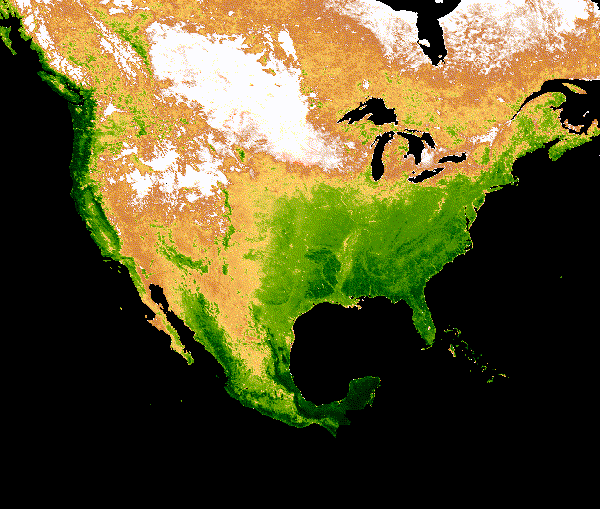
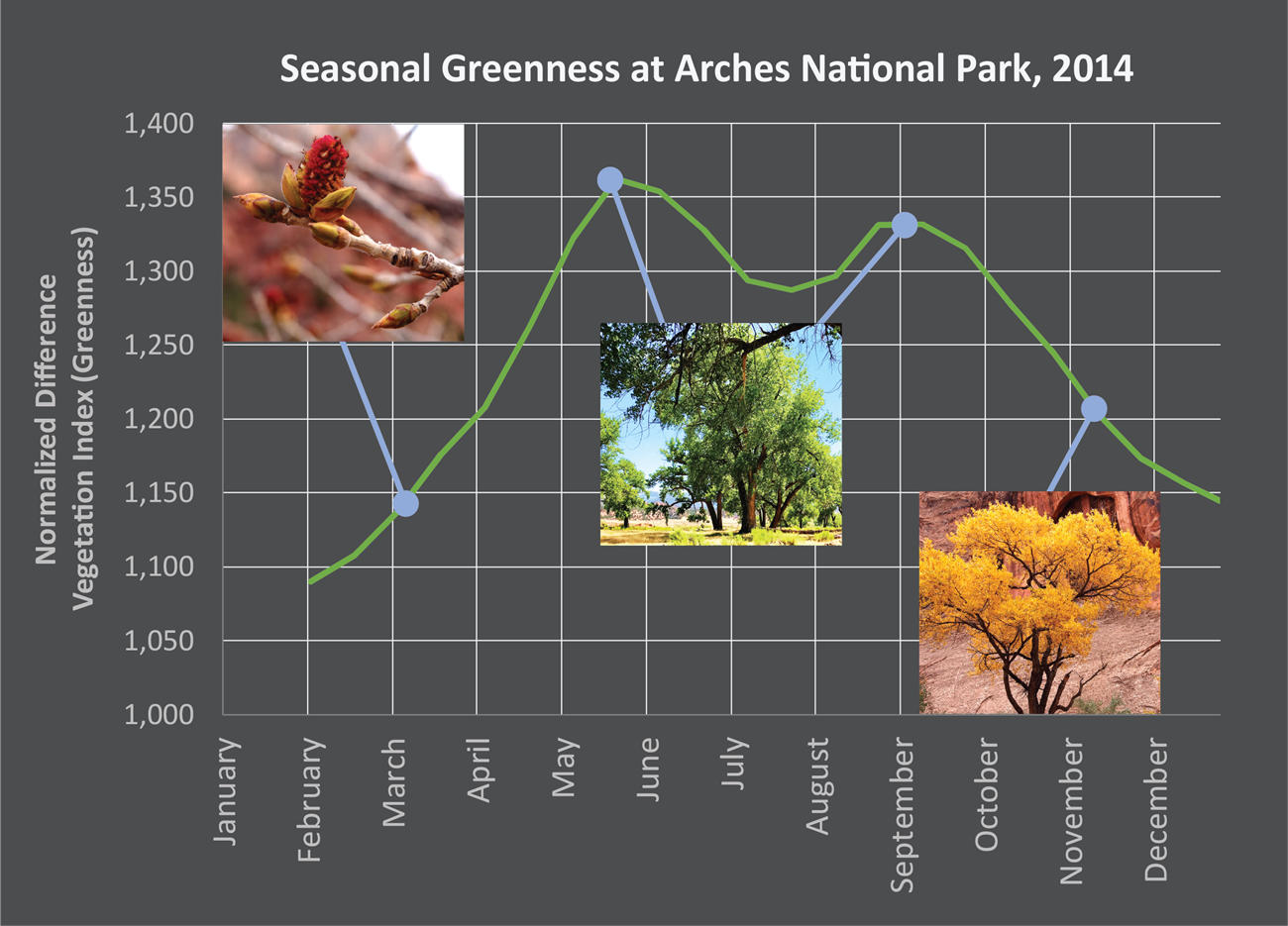
Photos by Amy Washuta.
Timing is Everything
Do you ever notice a bounce in your step in the spring? Is it because the air is moist and warm with the scent of new growth, and the world alive with blooming flowers and birdsong? When Halloween rolls around, you may feel that autumn is nigh. The air gets crisp and cool, and the leaves turn bright colors. Similarly, many plant and animal species cue in to warmth and moisture in spring. Shorter, cooler days tell them to prepare for the winter season. “Phenology” is the term we use to describe these cyclical seasonal events that dependably occur each year.
Satellites can’t see individual plants, but they can easily see many plants collectively turning green across the landscape. Using satellite images, we can compare the timing of spring green-up and fall browning over many years in NCPN parks. Changes in timing are caused by changes in temperature and water availability that can have cascading effects on plants and animals that depend on them. Understanding how plants respond to changes in weather and climate helps us understand other potential impacts to parks.
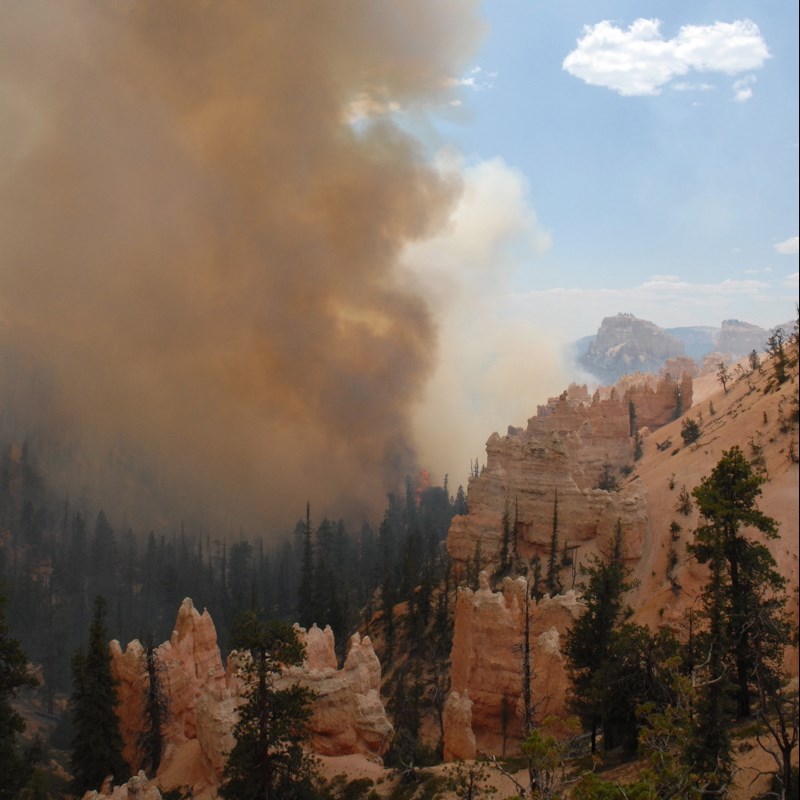
Photo by Bruce Fields
Early Warnings
A weather forecast can help you determine the right gear for a hike in the park. Similarly, NCPN scientists are working on ways to inform park managers of evolving conditions that may require their attention. To help managers anticipate weather conditions that lead up to wildfires, we used satellite images to determine where and when wildfires had burned, and the type of vegetation that burned. Combining that information with long-term weather data, we figured out a way to determine when conditions are dry enough that wildfires are more likely to occur for in forests and grasslands. The NCPN now provides automated early warning alerts of wildfire conditions to park managers so they can post warnings for visitors and prepare teams to manage fire in ways that can benefit ecological processes.
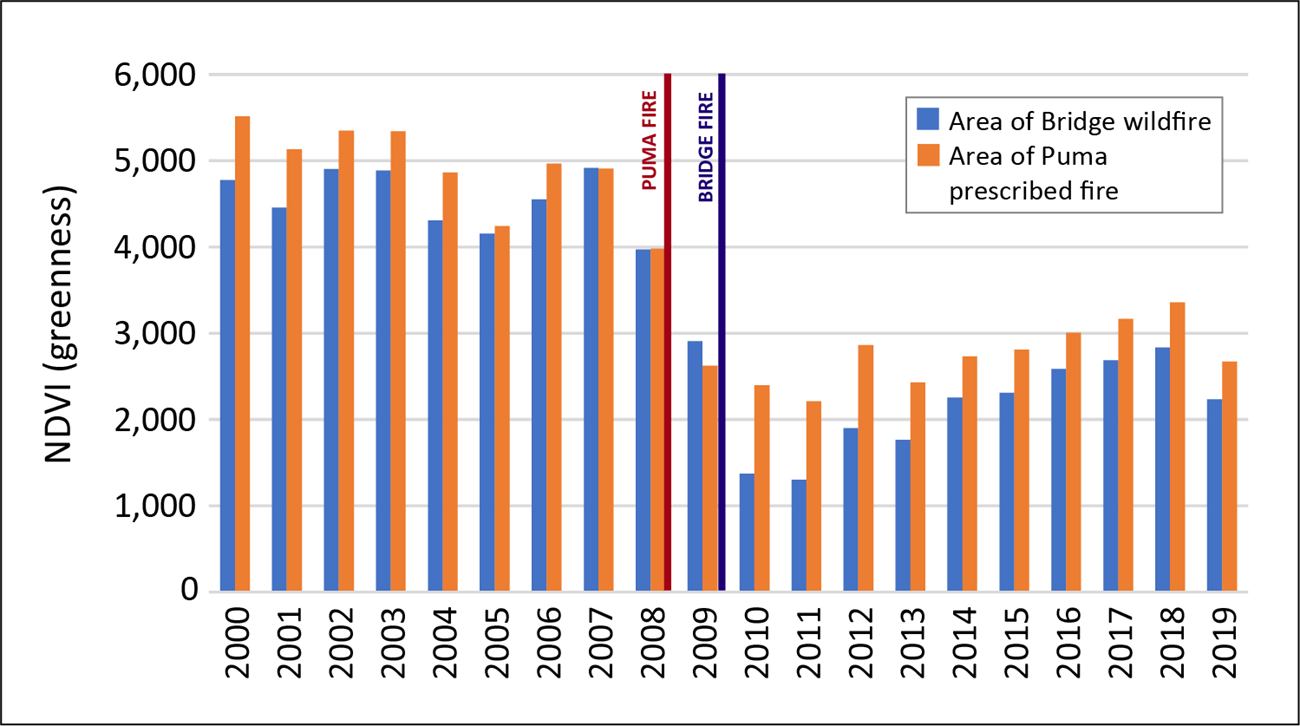
Big Changes
Fires on the Northern Colorado Plateau are typically not as big or devastating as they are elsewhere in the West, but they do cause big change. Some NCPN parks use prescribed fire to burn accumulated fuels. This helps ensure that when wildfires happen, they are ecologically beneficial, instead of turning into explosive events that destroy soils and cause runoff and erosion, making recovery more difficult.
At Bryce Canyon National Park, NCPN staff used satellites to monitor the intensity of a prescribed fire and a lightning-caused wildfire, and how both burned areas recovered over time. Using the satellite to monitor change in the amount of plant matter, or “greenness,” in the area of each fire, we found that the wildfire burned at much higher intensity, resulting in bare soil and, when rain fell, erosion. Recovery from both fires is still slowly occurring, but greenness in both areas is still much less than it was before the fires. NCPN field crews can tell us how many species are returning and in what abundance, and if erosion has stopped.
However, from the satellite imagery we can tell that the area where the prescribed fire burned had more vegetation before the fire, it didn’t burn as hot and vegetation recovery was faster than in the area burned by the wildfire. Information like this can help managers plan vegetation treatments and fire management in parks.
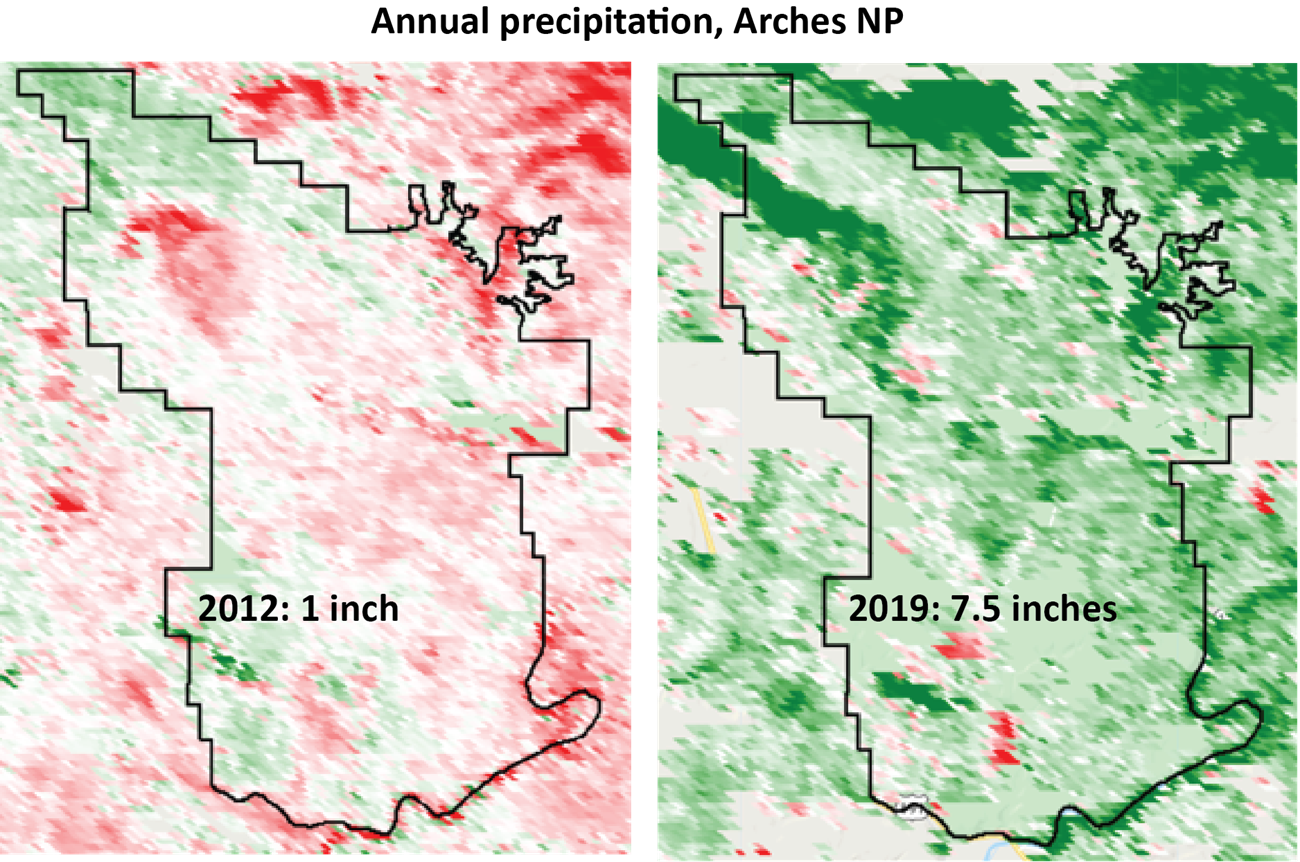
Diving Deeper
Let’s say you have a friend who looks pale. You may be able to tell they don’t feel well, but to find out how much they ache or hurt—and why—you need to ask follow-up questions. In a similar way, satellite imagery can tell us when park vegetation isn’t doing well. To understand why this is happening, and how severe conditions might be, we need to ask more questions. For instance, there were significant differences in spring greenness at Arches National Park in 2012 compared to 2019. A closer look at weather conditions reveals a lot more rain and snow fell prior to spring green-up in 2019 (7.5 inches) than in 2012 (1 inch). This highlights the importance of water on the Northern Colorado Plateau parks and provides clues about how much water park vegetation needs to thrive.
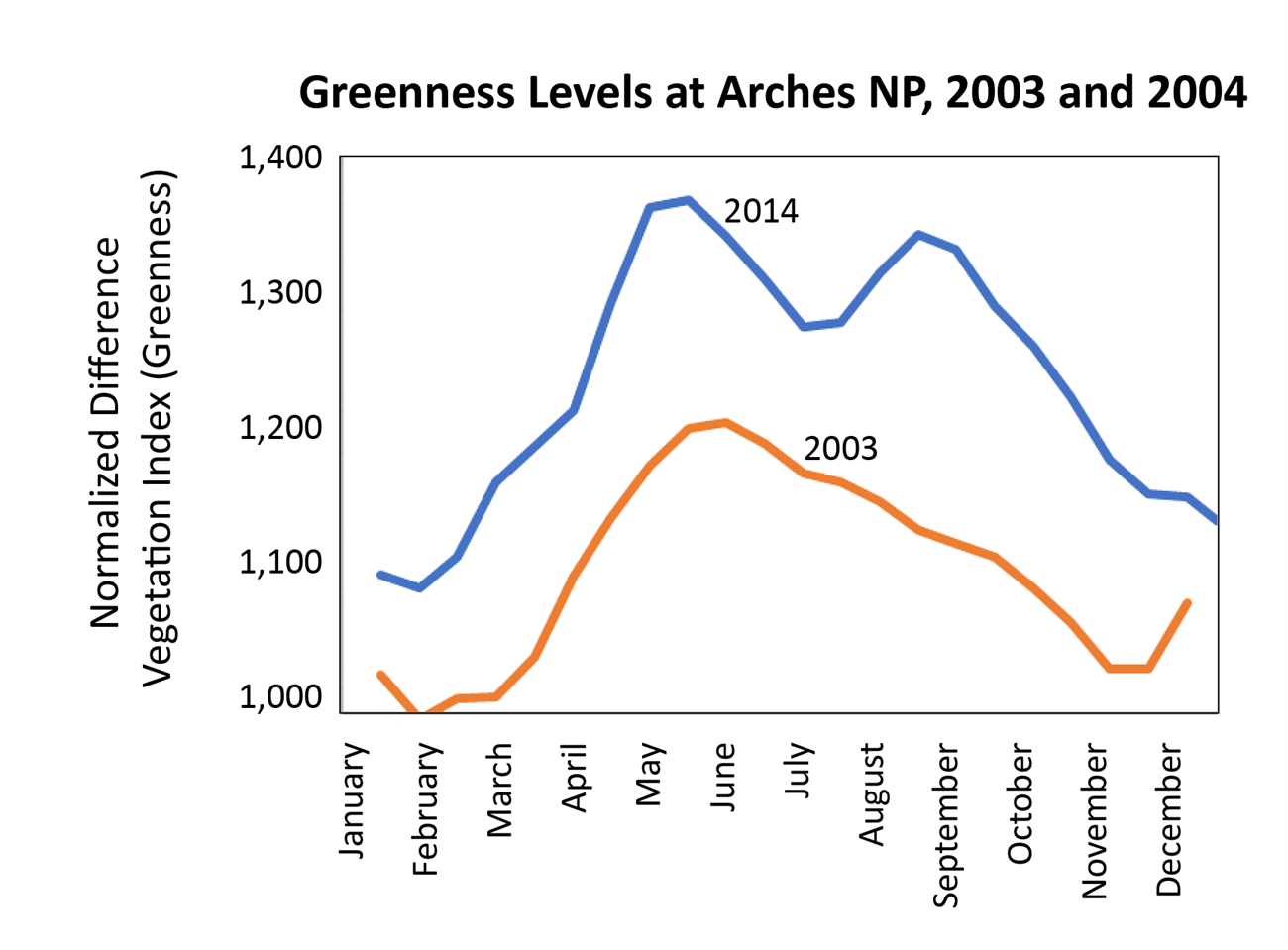
Water is Life
The list of ingredients for plant life is short: sunlight, water, air, and minerals. But the recipes that determine which plants grow where are complex. The timing and amount of rain and snow, along with favorable temperature and sunlight, all play a role in determining the types and density of plants that can thrive in each place. On the semi-arid Northern Colorado Plateau, water is often the limiting ingredient for plant growth. In typical years, springtime snowmelt and sunshine lead to a verdant flourish of growth in cool-season grasses. As soil moisture declines in June and July, grasses mature and begin to dry out and brown. Then, summer monsoon rains bring a second flush of growth in warm-season grasses and shrubs.
But if the monsoon rains don’t come, then the park misses out on a “monsoon bump” in vegetation growth. Failed monsoon seasons, which climate scientists expect to become more common, can have dire consequences for plants that rely on seasonal rains, and the animals that depend on them. Satellite imagery allows us to quantify the effects of a so-called “non-soon.” At Arches National Park, vegetation growth got a poor start in 2003 (orange line in the graphic), and the monsoon rains didn’t come. Contrast that year with 2014 (blue line), which started out with more moisture and got a monsoon bump in late summer. Overall, 2014 was a much more productive year of vegetation growth.
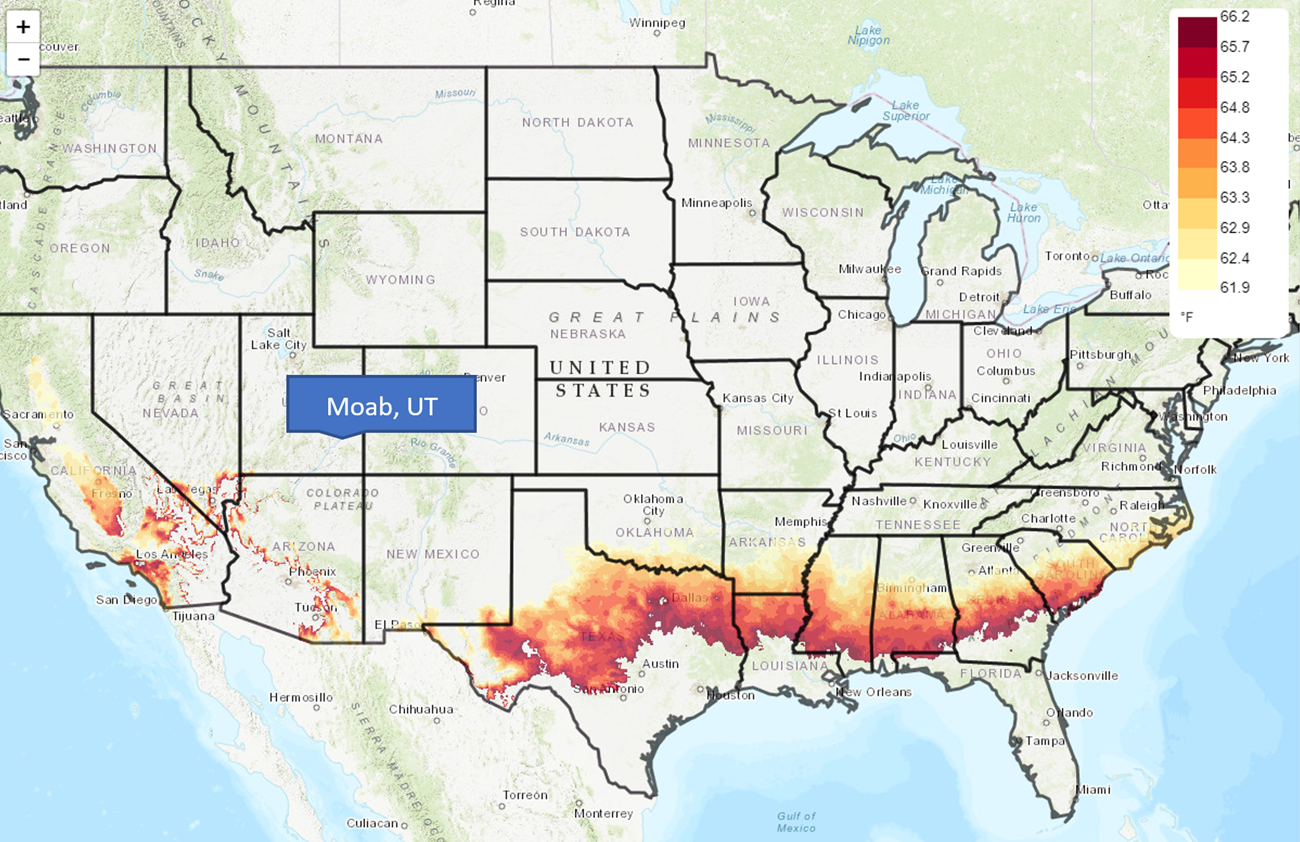
https://climatetoolbox.org/
Getting Warmer . . . and Drier
It’s getting warmer, but does that mean drier too?
Climate science tells us we can expect a warmer future on the Colorado Plateau. How much warmer? By the end of this century, the average temperature in Moab, Utah, could be 5.8 to 10.1°F warmer, which is as warm as Dallas, Texas or San Diego, California, are today. While Moab may get more annual precipitation in the future, it’s only projected to be about ½ inch more. That’s not nearly enough to offset the drying power of the projected warming. Higher temperatures cause evaporation and plant water use to increase, drying the soil faster, which can shorten the growing season. So how much drier could it get? Moab would need between 4 and 6 inches of additional precipitation (25–50% more than today) to bring the dryness back to conditions to which vegetation in Arches and Canyonlands national parks are adapted to today.
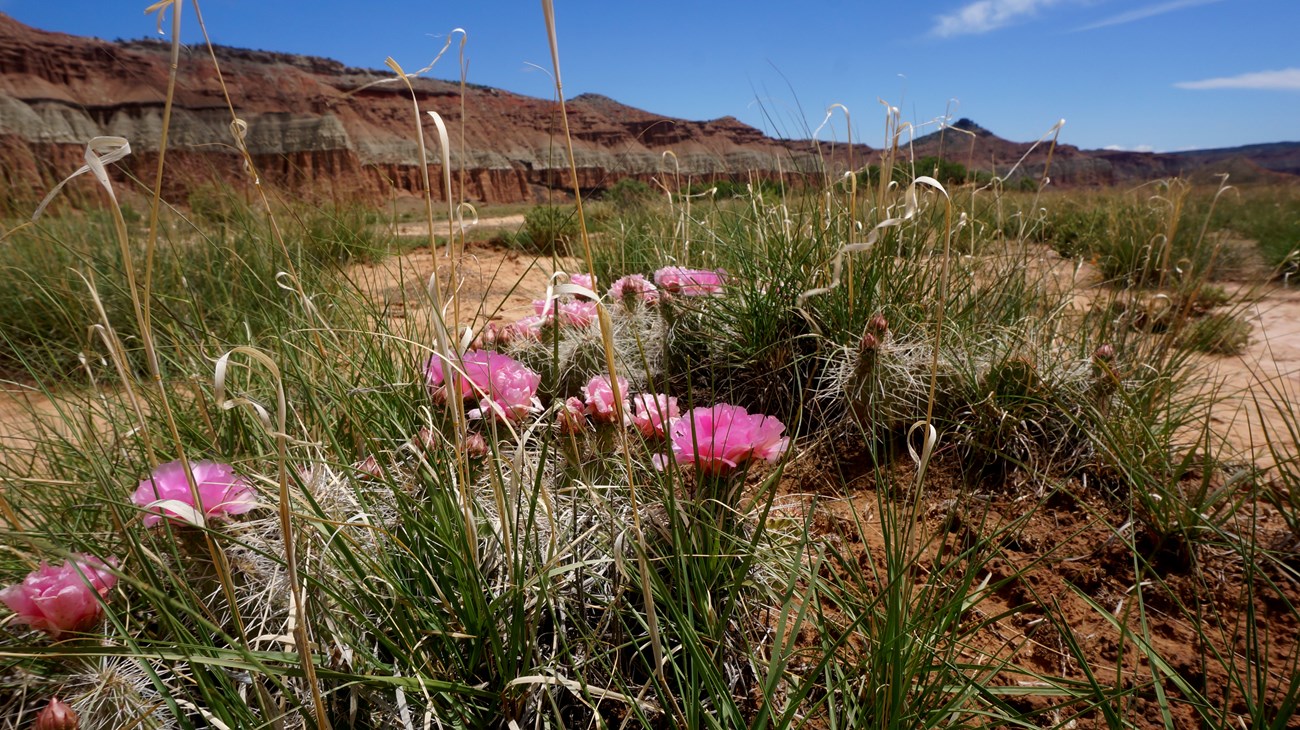
Measuring Drought Stress
By combining satellite observations with weather data, we can determine the critical water needs of vegetation in NCPN parks, and how much drought stress plants can tolerate. This tells us how sensitive park vegetation is to climate change. When we look carefully at how vegetation responds to climate change, we find a lot of variation. Some of that variation is caused by vegetation traits. A cactus has traits that enable it to handle drought, but when conditions are moist, it grows slowly. Other plants, including some grasses, have traits that allow them to grow quickly when moist but suffer in drought. Other variation is caused by the type of soil the plants are growing in. Because they have larger pores, sandy soils hold less water than loamy soils with more silt and clay. However, water can infiltrate deeply into sandy soil in spring and be stored until late summer for plants with deep roots, like shrubs. Along with climate, soil patterns and plant traits determine which plants grow in different places in parks.
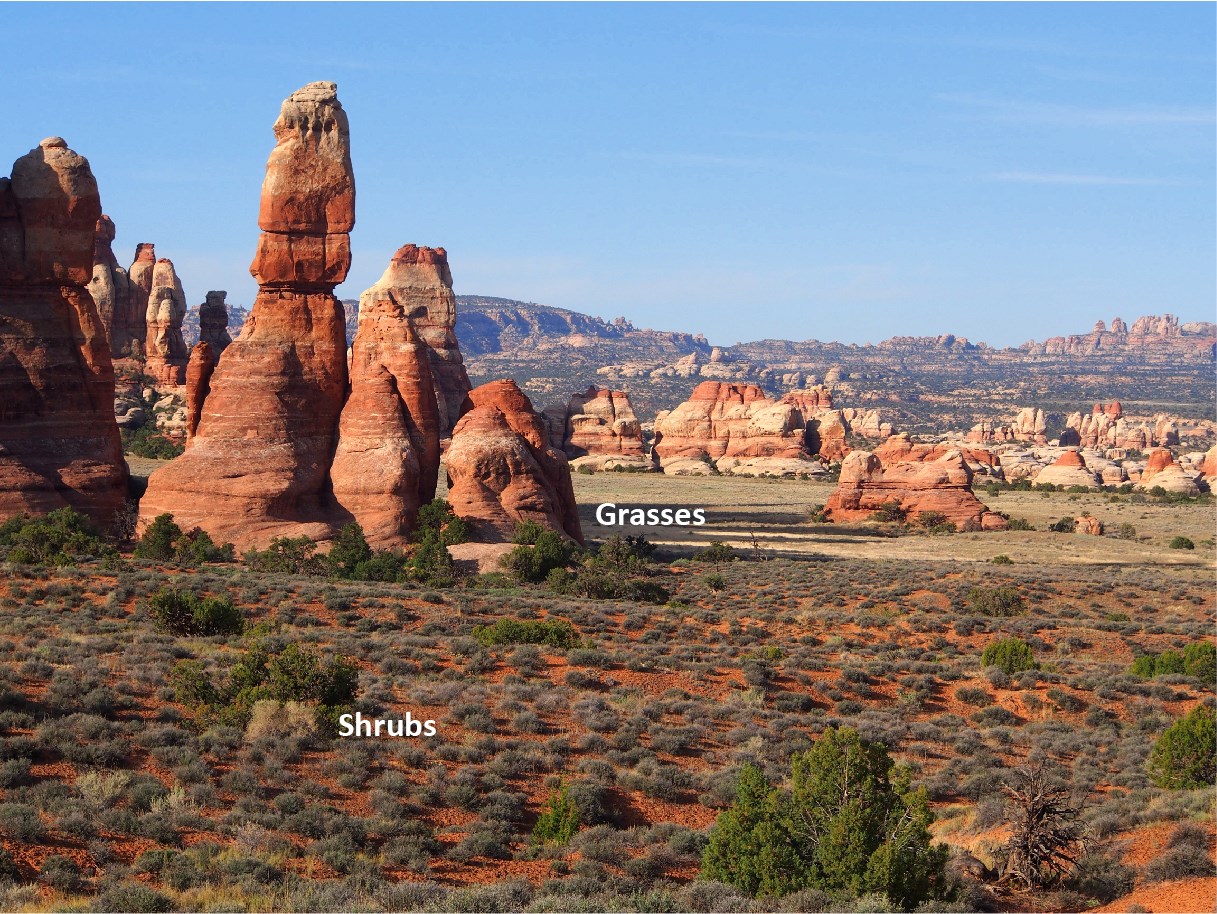
Context Matters
If you drink 8 glasses of water today, and it’s 70°F outside, you’d be nice and hydrated, right? Maybe—but maybe not. Contextual factors, like what kinds of activities you’ll be doing and what size person you are, mean 8 glasses could leave you either feeling great or seriously parched. It’s similar for plants. The type of plant, and where it grows, help determine how much water a plant needs to survive, and whether climate changes are no big deal—or a dealbreaker.
Before the last decade, NCPN monitoring treated climate as a combination of temperature and precipitation. But it turns out that conditions below the ground affect plant growth just as much as what’s happening above it. The key is soil moisture. Plants don’t “drink” rain; they use water from soil taken up by their roots. Shifting our focus from water falling from the sky to water stored in the soil has dramatically improved our understanding of the relationships between plants and climate in NCPN parks.
Here, in Chesler Park at Canyonlands National Park, shrubs and dwarf trees with deep roots tend to dominate sandy and rocky soils. Grasses dominate flatter, open areas. All the plants in this photo experience similar temperatures and precipitation, but the soils in the foreground and background hold moisture differently, favoring different types of plants.
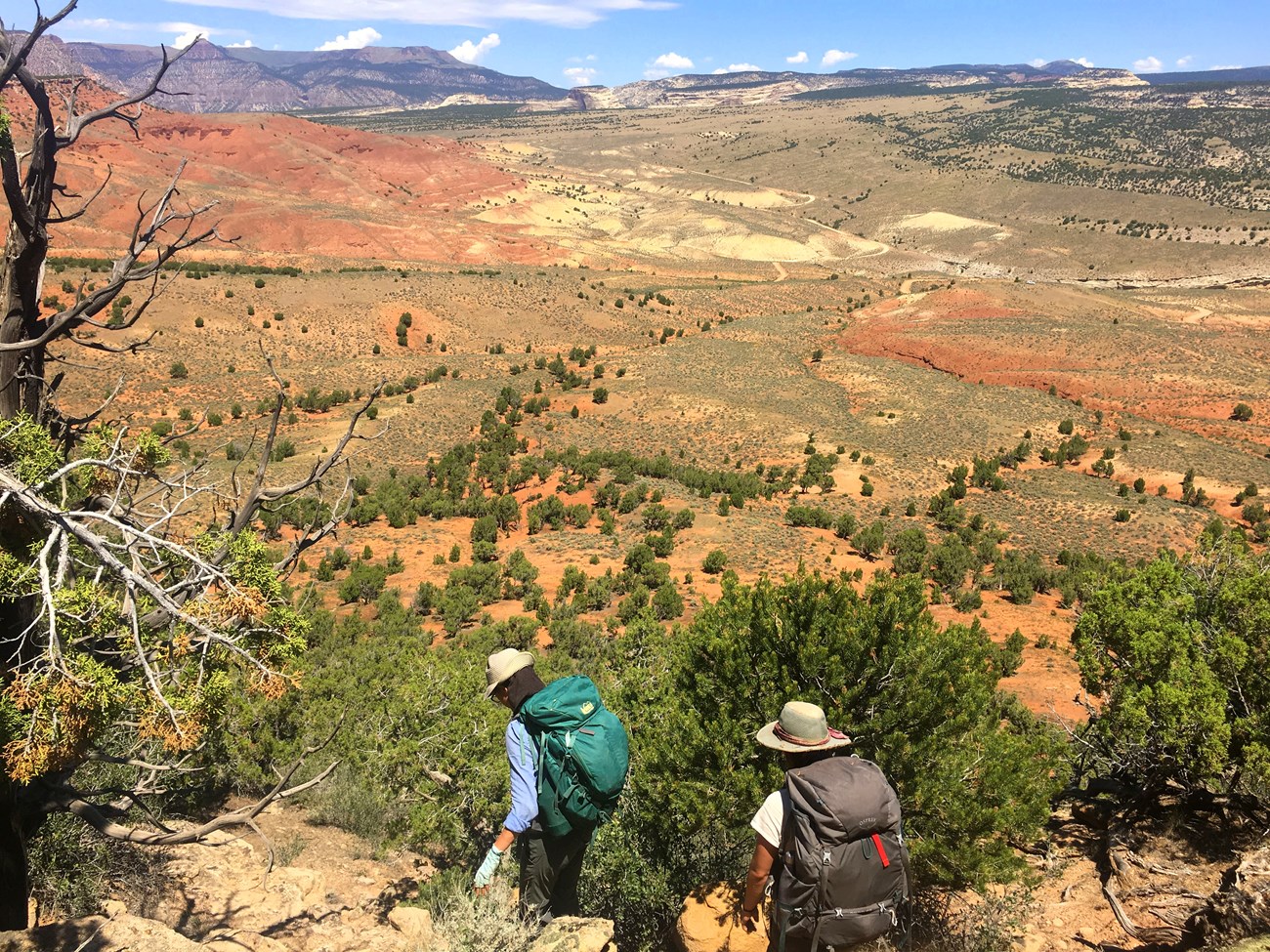
NPS/Amy Washuta
Water, Everywhere in All its Forms
NCPN scientists don’t directly measure soil moisture. We estimate it by putting precipitation and temperature data into a computer model. Every NCPN park has a weather station, and climate scientists have figured out how to extrapolate the weather between observation stations. This means we have weather data for every acre of every network park.
Not every snowflake or raindrop becomes water plants can use. Some precipitation runs off to form rivers or wetlands. Some evaporates, and some drains to replenish groundwater. At the NCPN, our goal is to measure water balance: how much of the water that falls from the sky is actually available to plants. Starting with the total precipitation, we subtract runoff, drainage, and evaporation. The remaining water, stored in soil, can be used by plants.
Put simply, the soil is a bank account for water. And like your bank account limits what you can pay for, soil moisture limits how much plants can grow in semiarid environments. By tracking how much water is available for plant growth, and how plants respond to that water, we get a sense of their spending habits, or traits. Just as people tend to spend differently, plants do, too. Plant traits tell us how different species are likely to respond to water shortages in the future.
Tracking how precipitation moves through the environment in its different forms (liquid, solid, gas) has improved our understanding of vegetation response to past climate. This in turn has vastly improved our ability to understand potential climate-change impacts in parks. The better we understand how climate affects parks today, the better we’ll be able predict how it may affect parks in the future.
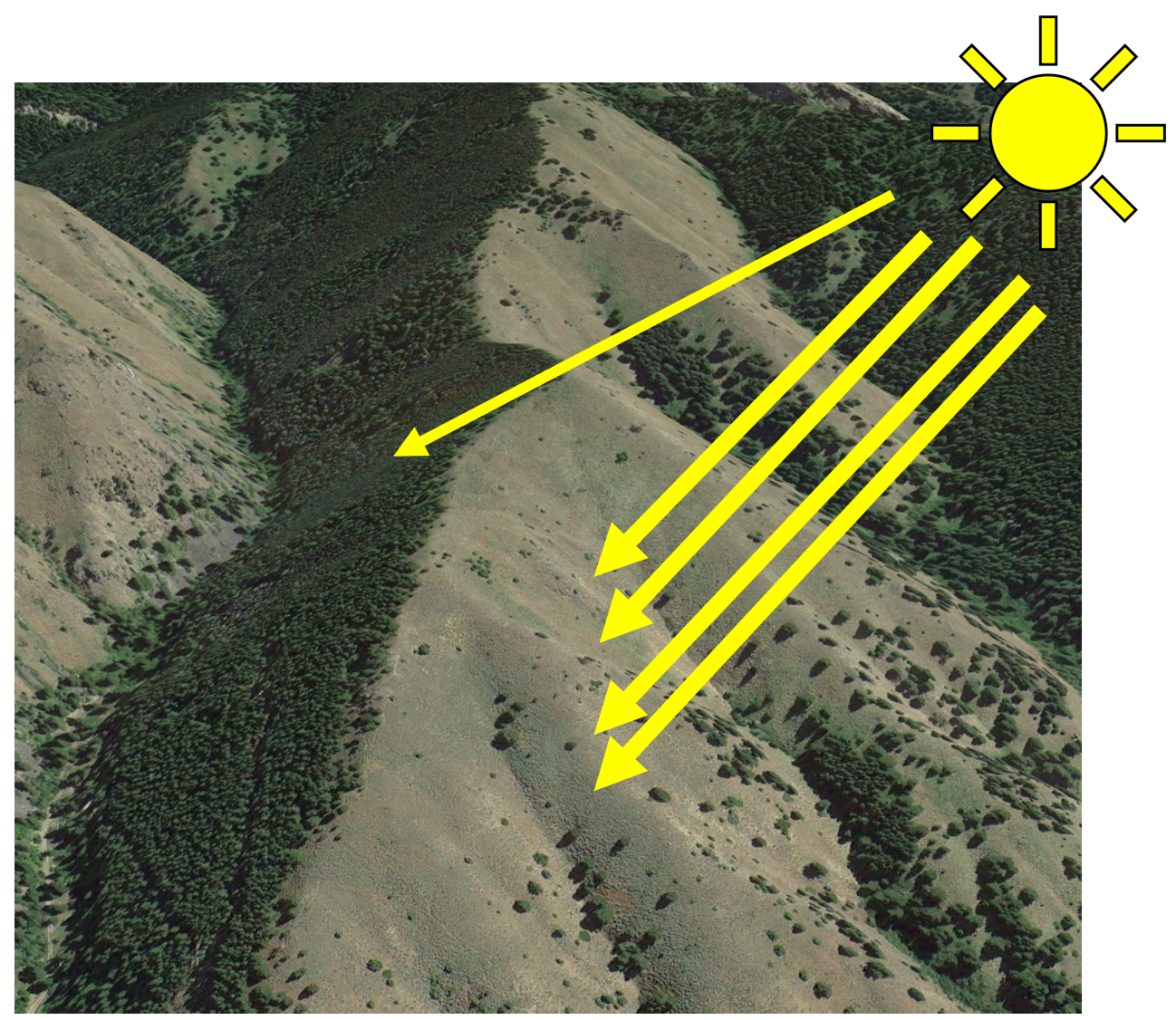
A Neat “Aspect” of Soil Moisture
If you’re burning up on a hot summer day, you can move into the shade to cool off. But not plants. Unable to move on their own, plants must deal with the conditions where they are. In the image shown here, grasses grow on the south side of the ridgeline. Forest grows on the north side. If the same amount of rain falls on both sides of the ridgeline, why the big difference in vegetation? It’s because on the sunny south side, soil moisture is rapidly depleted. Relative to trees, grasses grow quickly, then go dormant when the soil dries. This allows them to survive the drier conditions on the south side of the ridge. On the shady north side, the soil stays moist longer, which supports a forest.
Aspect is the direction a hillside faces. The computer model NCPN scientists use to estimate the amount and timing of soil moisture for grasses and forests accounts for this. Modeling results improve our understanding of plant/climate relationships in the complex and wild landscapes of national parks, where we can’t measure soil moisture everywhere.
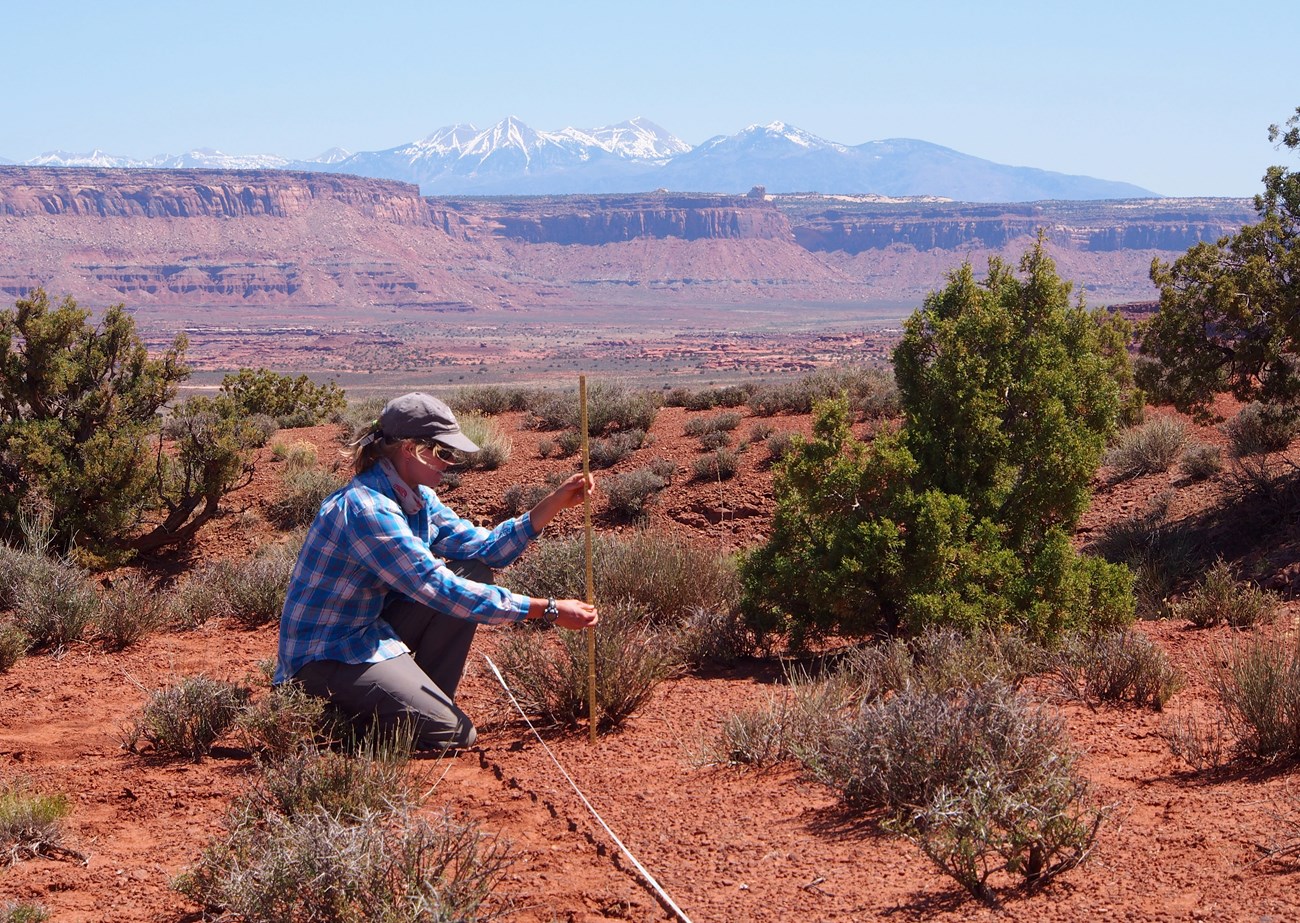
NPS/Luke Gommermann
Thinking Big and Small
Have you ever looked closely at a newspaper photograph? At first glance, it’s a clear image of something you instantly recognize. But if you look at it under a magnifying glass, you can see it’s made up of tiny, individual dots of different colors and shades. Satellite imagery can tell us about conditions across large landscapes, but to see the small things that scale up to provide a more complete picture of what’s happening, we need to take a walk in the park.
NCPN field crews collect data on vegetation condition by taking measurements of individual plants. This is important because as sophisticated as a satellite is, it can’t tell a blackbrush from a rabbitbrush, or a pinyon from a juniper—pretty basic stuff for a botanist. Crew members might notice one grass species looking healthy on every site visit over several years, while another struggles. They might record a big flourish of small herbs following rains, or browning leaf tips on one tree species in a drought. The details they pick up help us understand what we see in satellite images. On the other hand, field crews can’t go everywhere and don’t visit every park every year, so we combine what we see on the ground with what we see from space. In the bigger picture, having boots both on the ground and in space allows us to better understand the overall condition of NCPN parks, what’s changing, where, and why.
The Future
The US Southwest is projected to experience continued warming and drying. Higher temperatures mean the soil will dry out faster if rain and snowfall stay about the same. When conditions are dry, it will also be hotter, creating what scientists call a “hot drought.” This will stress vegetation in ways it may not be adapted to handle. With all the change expected in the future, parks may look quite different. At the NCPN, our goal is to ensure park ecosystems continue to function—not to try to keep them frozen in time. We work closely with collaborators and park managers to figure out what climate change will mean for NCPN parks, so managers can make informed decisions to protect park resources where they can as the climate changes. We call this process Climate Smart Conservation. It means we use science to guide management goals and actions that can help mitigate undesirable change, while promoting change that keeps park ecosystems functioning. For example, degraded places in parks may be restored with plants that are more likely to thrive in the future. By looking forward as we plan today, we can promote positive transitions to future conditions.
Want to know more? Visit the NCPN's phenology webpage.
Information on this page originally appeared as a series of social media posts on the Northern Colorado Plateau Network Facebook page, using the hashtag #MonitoringFromSpace.
Tags
- arches national park
- black canyon of the gunnison national park
- bryce canyon national park
- canyonlands national park
- capitol reef national park
- cedar breaks national monument
- colorado national monument
- curecanti national recreation area
- dinosaur national monument
- fossil butte national monument
- golden spike national historical park
- hovenweep national monument
- natural bridges national monument
- pipe spring national monument
- timpanogos cave national monument
- zion national park
- phenology
- phenology monitoring
- monitoring
- ncpn
- northern colorado plateau network
- northern colorado plateau
- science
- ndvi
- satellite
- nasa
- resource management
- climate
- climate change
- monsoon
- water availability
- water balance
- climate science
- climate change effects
- climate change adaptation
- research
- vegetation
- vegetation and soils
- soil
- soils
